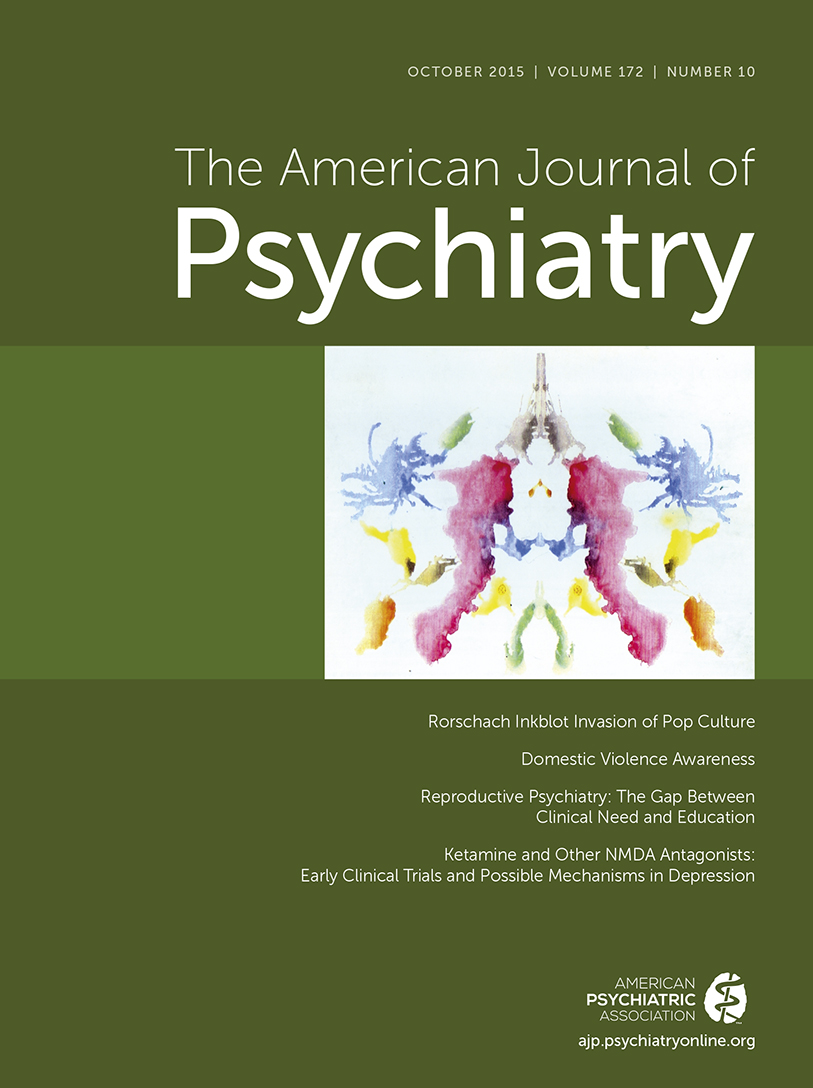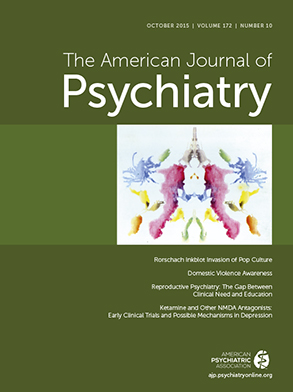In Smoking Privileges: Psychiatry, the Mentally Ill, and the Tobacco Industry in America, author and psychiatrist Laura Hirshbein covers the history of tobacco use in mental health facilities referencing professional writings, patient stories, popular cinema, and tobacco industry documents. Aptly titled, the book captures the complex and entrenched status of smoking in psychiatric practice—viewed as a patient right, a benefit, or immunity gained by social position, effort, or concession.
In 1992, U.S. hospitals banned smoking; exempted were psychiatric units. Disparities now exist for individuals with co-occurring psychiatric disorders; these individuals have a two- to fourfold greater smoking prevalence and significant tobacco-related morbidity, mortality, and financial insecurity (
1). Individuals with serious mental illness are dying on average 25 years prematurely; tobacco is a major contributing cause (
2).
Hirshbein writes of psychiatric hospitals growing tobacco and providing cigarettes in patient rations and of staff and psychiatrists smoking with their patients. Numerous interpretations for smoking in psychiatric settings are provided, including the cigarette as a companion and personal right; smoking as a therapeutic activity for encouraging human interactions, as a shared language between patients and providers, and as a reward and incentive for treatment compliance; smoking as an inherent part of the mental illness experience, as a form of defiance of authority, or as a symbol of developing adulthood; and smoking as a coping strategy, as a tool for patient control, and as an aid to mental health recovery and sobriety. Our research has documented the tobacco industry’s interests in furthering these views (
3). Reflecting her own ambivalence, Hirshbein describes providing smoking breaks to gain rapport with a vulnerable patient who eventually died from kidney disease complications, a condition adversely affected by smoking.
Cursorily covered in the book is addiction to tobacco. Smoking is described as “apparently simple,” made complex when used by someone with mental illness (p. 5). In the United States, 42 million adults smoke, 70% of whom want to quit; although 40% attempt cessation each year, only 2%–5% are successful (
4). Addiction is not simple. Further, Hirshbein denounces tobacco control researchers for working with pharmaceutical companies on treatments for nicotine addiction while praising tobacco industry researchers for their focused attention on psychological and personality factors as reasons for smoking. I receive mention as an “analyst” who has “castigated providers” and “caricatured” harm reduction (p. 124). I am not an analyst, and Hirshbein grossly misstates the content and tone of my editorial (
5). Having trained and worked with mental health providers across the United States and internationally, collaboration and engagement, not castigation or judgment, are central for this public health effort. With that in mind, I recognize the gems within Hirshbein’s book, though with some reservations on scholarly accuracy, including her claim that tobacco control experts have criticized the use of nicotine replacement for harm reduction.
Individuals and care providers have shared with me their experiences with smoking privileges in psychiatry. One woman started smoking at age 63 during residential drug treatment; everyone was smoking and she did not want to be alone. A young man hospitalized for schizophrenia was advised by a fellow patient, “If you want to handle your psych meds, start smoking.” (Tobacco smoke induces the metabolism of several psychiatric medications, lowering blood levels.) A mother recalled the struggle to get her daughter with schizophrenia off of cigarettes—she had entered the hospital a nonsmoker and returned hooked on nicotine. Clinicians working on psychiatric units described the air thick with smoke, couches riddled with cigarette burns, unit fires, and even one cigarette company that donated cases of cigarettes to compromise a smoking ban. A unit director, frustrated by the staff hours spent managing the smoking economy and the fights among the haves and have-nots, unilaterally banned tobacco from his unit only to be told by administration that he had to first prove it would do no harm. He did and then made all three psychiatric units at the hospital smoke-free. Another patient proudly pronounced his smoke-free status, aided by the state quit line.
The cover artwork of
Smoking Privileges is sterile and dark, the only light highlighting cigarettes in an ashtray. Reminiscent of an interrogation cell, the image paints a narrow, and oft stereotyped, view of psychiatric facilities. In 2013, a front-page
New York Times article covered the history and success of psychiatric hospitals going smoke-free. In response, a reader posted: “…arrogant and cruel to take that [smoking breaks] away. If you were incarcerated in one of those institutions, you might not see it as a problem to shave 5–10 years off of your sentence” (
6). Hospitals are not prisons, and all human life is valued. Further, prisons that banned smoking have seen substantial declines in deaths among inmates with mental health concerns, attributed to the smoking bans (
7).
The phenomenon of tobacco use in psychiatry is international, as is the solution—consistently, psychiatric hospitals that have banned tobacco have faced little disturbance (
8). In the United States, about 80% of state psychiatric hospitals ban smoking. Further, research has demonstrated success with treating tobacco in psychiatry, including in the acute setting, with associated reduced risk of rehospitalization (
9–
11). The American Psychiatric Association’s Tobacco Use Disorders Workgroup is advancing education, outreach, and health policy to reduce tobacco use in psychiatry. Change is possible, and together we can address the major preventable cause of death facing our patients, our professions, and our nation.

